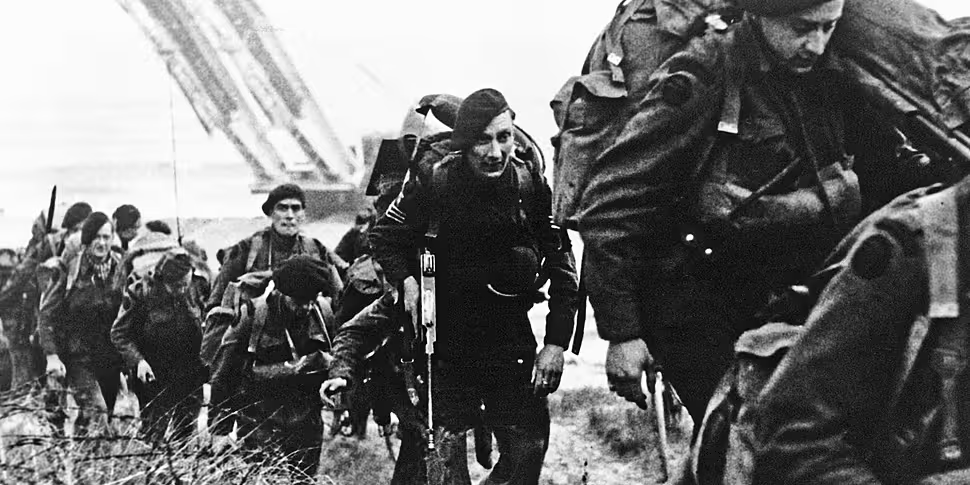The world has marked 80 years since the D-Day Landings in France - the largest amphibious invasion in the history of warfare.
Allied forces used over 5,000 ships and landing craft to land more than 150,000 troops on five beaches in Normandy.
The landings marked the start of a campaign in north-west Europe which ultimately convinced Germany that defeat was inevitable.
US President Joe Biden, French President Emmanuel Macron and Britain's King Charles were among those who attended D-Day commemorations in France on Thursday.
Journalist and Broadcaster Kevin Myers told The Hard Shoulder the Irish were there in large numbers on this day in 1944.
"We've got a really good idea about the numbers of Irishmen who were serving with the British - but not how many were serving who actually served and not died," he said.
"Canadian forces are reasonably good; American forces don't list the places of birth so it's hard to say.
"I don't think there would be any less than several hundred, and possibly 1,000, Irishmen who were serving.
"In the frontline, on the first hour of the landings at around 7am, there would have been several hundred".
'The elite regiments'
Mr Myers said he has spoken to a lot of veterans in the last 40 years.
"John Howard, of the Oxfordshire and Buckinghamshire Light Infantry, who led the first British attack... he said that 10% of his battalion were Irish," he explained.
"He then paused and said, 'The best 10%' and I don't think he was exaggerating.
"The Irish when they joined went for the elite regiments - they went of the commandos, they went for the parachute regiment, the special air service and infantry battalions.
"The first Irish death that we know of - Edward Delaney O'Sullivan - was with the 22nd Independent Pathfinder Unit of the parachute regiment".
'The first Irish death'
Mr Myers said Mr O'Sullivan's job in the village of Toufreville was to establish a beacon for oncoming aircraft to drop their gliders.
"He was killed in a church yard there along with a German that he killed," he said.
"He would have been the first Irish death - in the ensuing hours thousands of soldiers landed.
"One of the Irish was Joseph Mullally, landing with the Green Howards, and he got ashore.
"One of his companions noticed the tree was full of birds and he turned to Mullally and said, 'Look at all the birds sir'
"Mullally looked around and said, 'No wonder - there's no room in the air because there was so much shelling'.
"Of those two men Hollis, his companion, got a Victoria Cross, and Mullally was dead within seconds".
D-Day weather forecast
Irish involvement also led to the landing being postponed owing to a weather forecast from one Mayo woman.
Maureen Flavin Sweeney was working in a remote lighthouse taking weather forecasts.
She saw a front coming in from the Atlantic on June 3rd with the forecast passed onto Dublin, which in turn sent them to London and the British Ministry of Defence.
As a result the major military operation was postponed by 24 hours.
At the time, Mrs Sweeney had no idea of the significance of what she had done.
Listen back here:









